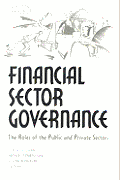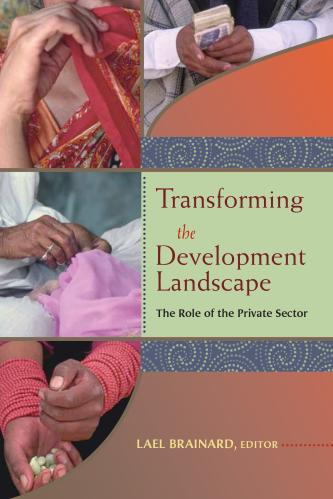In the past decade, a remarkable shift has occurred in the development landscape. Specifically, acknowledgment of the central role of the private sector in contributing to, even driving, economic growth and global development has grown rapidly. The data on financial flows are dramatic, indicating reversal of the relative roles of official development assistance and private financial flows. This shift is also reflected in the way development is framed and discussed, never more starkly than in the Addis Abba Action Agenda and the new set of Sustainable Development Goals (SDGs). The Millennium Development Goals (MDGs), which the SDGs follow, focused on official development assistance. In contrast, while the new set of global goals does not ignore the role of official development assistance, they reorient attention to the role of the business sector (and mobilizing host country resources).
The U.S. Agency for International Development (USAID) has been in the vanguard of donors in recognizing the important role of the private sector to development, most notably via the agency’s launch in 2001 of a program targeted on public-private partnerships (PPPs) and the estimated 1,600 USAID PPPs initiated since then. This paper provides a quantitative and qualitative presentation of USAID’s public-private partnerships and business sector participation in those PPPs. The analysis offered here is based on USAID’s PPP data set covering 2001-2014 and interviews with executives of 17 U.S. corporations that have engaged in PPPs with USAID.
The genesis of this paper is the considerable discussion by USAID and the international development community about USAID’s PPPs, but the dearth of information on what these partnerships entail. USAID’s 2014 release (updated in 2015) of a data set describing nearly 1,500 USAID PPPs since 2001 offers an opportunity to analyze the nature of those PPPs.
On a conceptual level, public-private partnerships are a win-win, even a win-win-win, as they often involve three types of organizations: a public agency, a for-profit business, and a nonprofit entity. PPPs use public
resources to leverage private resources and expertise to advance a public purpose. In turn, non-public sectors—both businesses and nongovernmental organizations (NGOs)—use their funds and expertise to leverage government resources, clout, and experience to advance their own objectives, consistent with a PPP’s overall public purpose. The data from the USAID data set confirm this conceptual mutual reinforcement of public and private goals.
The goal is to utilize USAID’s recently released data set to draw conclusions on the nature of PPPs, the level of business sector engagement, and, utilizing interviews, to describe corporate perspectives on partnership with USAID.
The arguments regarding “why” PPPs are an important instrument of development are well established. This paper presents data on the “what”: what kinds of PPPs have been implemented and in what countries, sectors, and income contexts. There are other research and publications on the “how” of partnership construction and implementation. What remains missing are hard data and analysis, beyond the anecdotal, as to whether PPPs make a difference—in short, is the trouble of forming these sometimes complex alliances worth the impact that results from them?
The goal of this paper is not to provide commentary on impact since those data are not currently available on a broad scale. Similarly, this paper does not recommend replicable models or case studies (which can be found elsewhere), though these are important and can help new entrants to join and grow the field. Rather, the goal is to utilize USAID’s recently released data set to draw conclusions on the nature of PPPs, the level of business sector engagement, and, utilizing interviews, to describe corporate perspectives on partnership with USAID.
The decision to target this research on business sector partners’ engagement in PPPs—rather than on the civil society, foundation, or public partners—is based on several factors. First, USAID’s references to its PPPs tend to focus on the business sector partners, sometimes to the exclusion of other types of partners; we want to understand the role of the partners that USAID identifies as so important to PPP composition. Second, in recent years much has been written and discussed about corporate shared value, and we want to assess the extent to which shared value plays a role in USAID’s PPPs in practice.
The paper is divided into five sections. Section I is a consolidation of the principal data and findings of the research. Section II provides an in-depth “data picture” of USAID PPPs drawn from quantitative analysis of the USAID PPP data set and is primarily descriptive of PPPs to date. Section III moves beyond description and provides analysis of PPPs and business sector alignment. It contains the results of coding certain relevant fields in the data set to mine for information on the presence of business partners, commercial interests (i.e., shared value), and business sector partner expertise in PPPs. Section IV summarizes findings from a series of interviews of corporate executives on partnering with USAID. Section V presents recommendations for USAID’s partnership-making.
The Brookings Institution is committed to quality, independence, and impact.
We are supported by a diverse array of funders. In line with our values and policies, each Brookings publication represents the sole views of its author(s).











